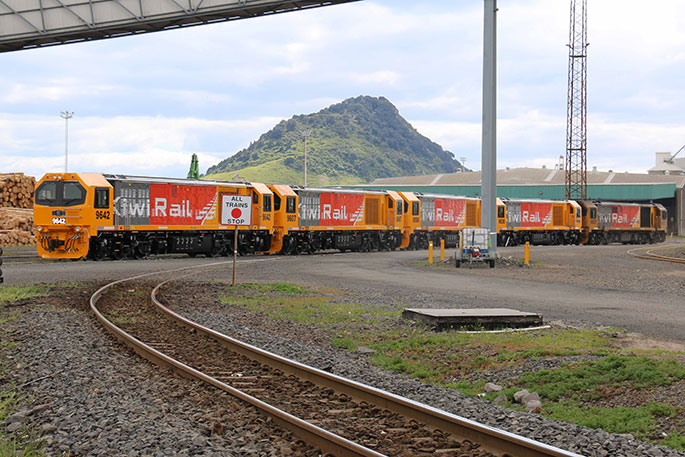KiwiRail's half-year result reflects a challenging six months operating during the pandemic but changes around the Port of Tauranga have proved one of the bigger successes, says the company's acting chief executive.
KiwiRail Holdings Limited, which owns and operates New Zealand's rail network and the Interislander Cook Strait ferries, today announced an operating surplus of $64.9m for the six months ended December 31, 2021 (HY22).
The HY22 result is the first to be reported under KiwiRail's new funding model. Under this model the "below rail" or network component of the railway is fully funded through the National Land Transport Fund, supported by the Crown and track-user charges.
This means the group operating surplus of $64.9m reflects KiwiRail's "above rail" commercial operations.
HY22 operating revenue for the above rail business was $317.4m. Revenue excluding fuel and track user charge recoveries was $301.8m, which was $4m better than comparable revenue for HY21.
KiwiRail acting group chief executive David Gordon says HY22 was a testing half-year for the business but highlights the Port as one area of success.
KiwiRail have steadily increased their freight journeys on the Auckland-Tauranga connection, rising from 72 in April 2021 to 86 in May 2021 - helping to clear the container tower forming in Tauranga.
"We realised the benefits of changes to our train schedules allowing us to carry more freight to and from Port of Tauranga,” says David.
'This benefited the country by easing congestion in the supply chain and also boosted our rail freight revenue for the half-year.
"We also had good revenue growth in bulk freight.”
However, increased bulk revenue and import-export revenue were offset by the negative impact of Covid on international and domestic tourism, affecting scenic services and ferry passenger numbers.
Reduced commercial vehicle and passenger capacity on the Interisland ferry fleet, inflationary pressure, insurance costs and Covid-related expenses also affected the result.
Below rail operating expenses, funded primarily through the NLTF and recoveries from Auckland and Wellington metros, for HY22 were $91.3m.
This comprises the costs of maintaining, operating and managing the 3,700km rail network, including the Auckland and Wellington metro areas.
"The result also reflects the ongoing impact of Covid on our costs and tourism business on the trains and ferries, and the ageing ferry fleet experiencing a period of poor reliability,” David admits.
'Both of these factors look likely to impact the full-year results too.
"Ferry freight volumes were down significantly as the result of mechanical failures affecting the ships. Kaiarahi required major repairs to its gearbox after its sudden failure in August and she is not expected to be back in service for several more months. Aratere also needed work at critical times.
"We moved as quickly as possible to lease an additional freight ferry, Valentine, to provide capacity and resilience on Cook Strait but she only started sailing regularly in January."
He says the disruptions underline the importance of KiwiRail's contract for two new rail enabled ferries with the Korean shipbuilder Hyundai Mipo signed in June 2021.
Kiwirail also signed up for the delivery of 57 new locomotives in October.
The locomotives, which will be built in Spain, will begin arriving and entering service in the South Island from early 2024.
"We successfully carried out our biggest ever work programme on the Auckland commuter network over the holiday break, and at the same time delivered further programmes in the Wellington commuter network, Northland and Bay of Plenty,” says David.
"We are making good progress on delivering on the Government's investment in rail infrastructure maintenance and upgrades.
"Our multi-year programme to restore a resilient and reliable railway is well underway. It lays the groundwork for KiwiRail to play a growing and vital part in New Zealand's transport infrastructure, helping to lower transport emissions and ease domestic supply chain constraints.
"We still have a substantial amount of work to complete, but I am proud of what our team has achieved so far."



0 comments
Leave a Comment
You must be logged in to make a comment.